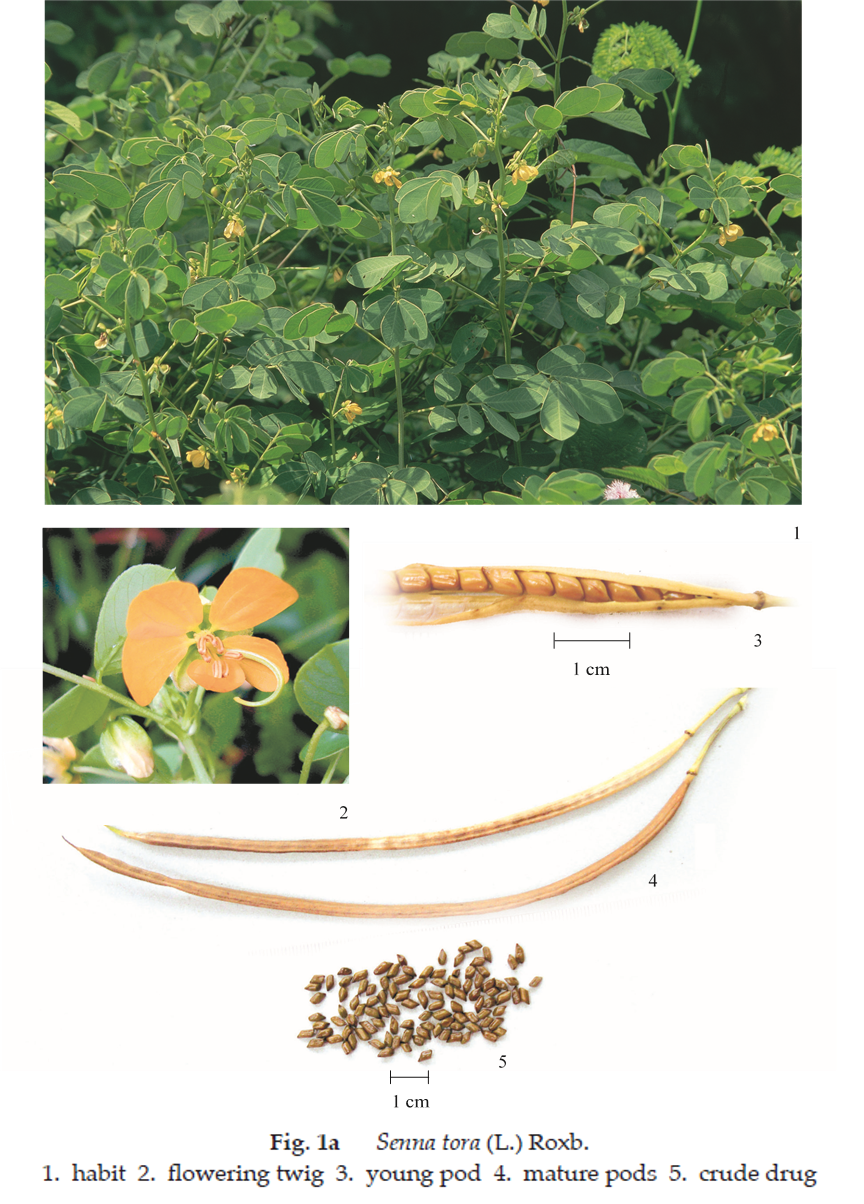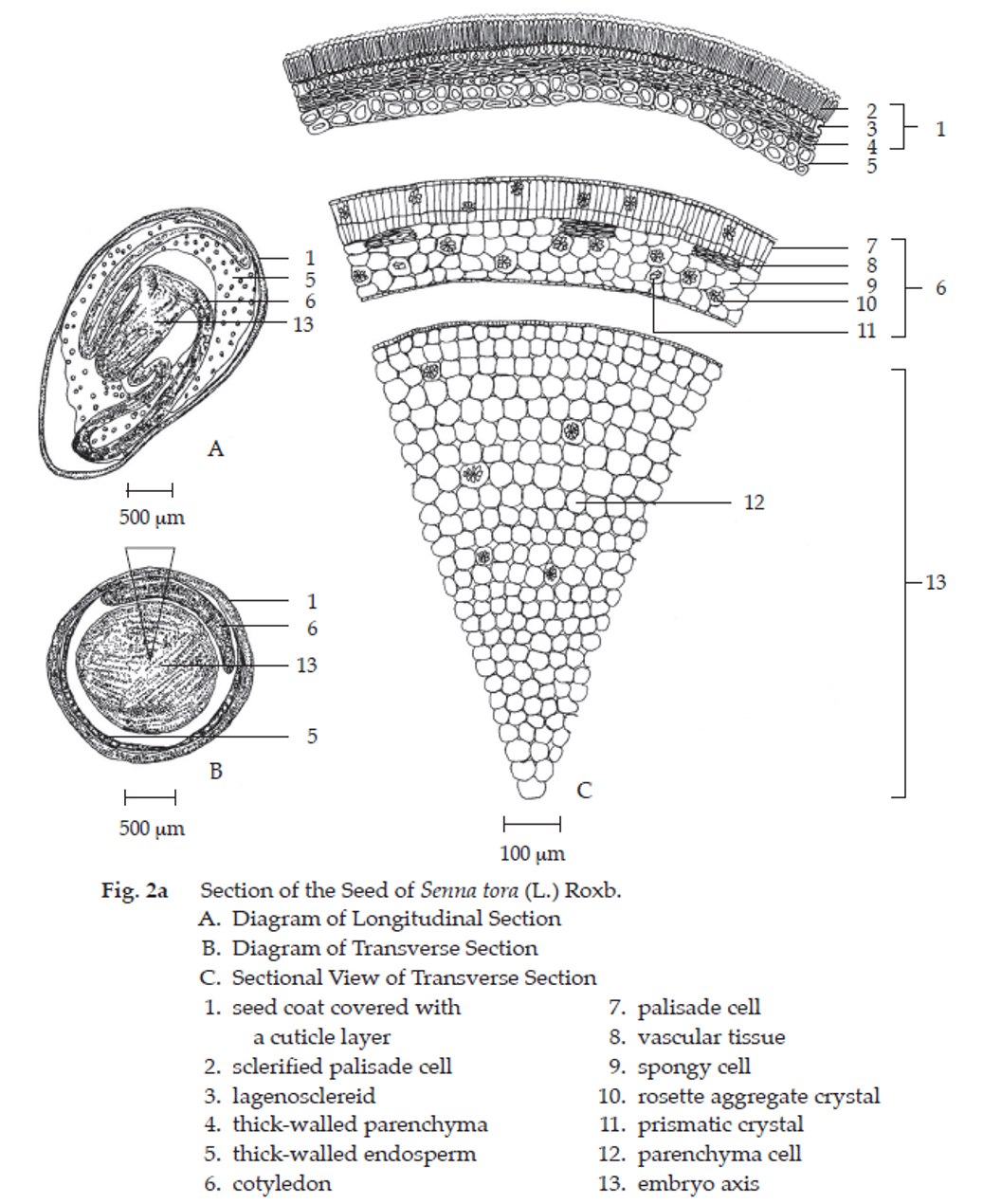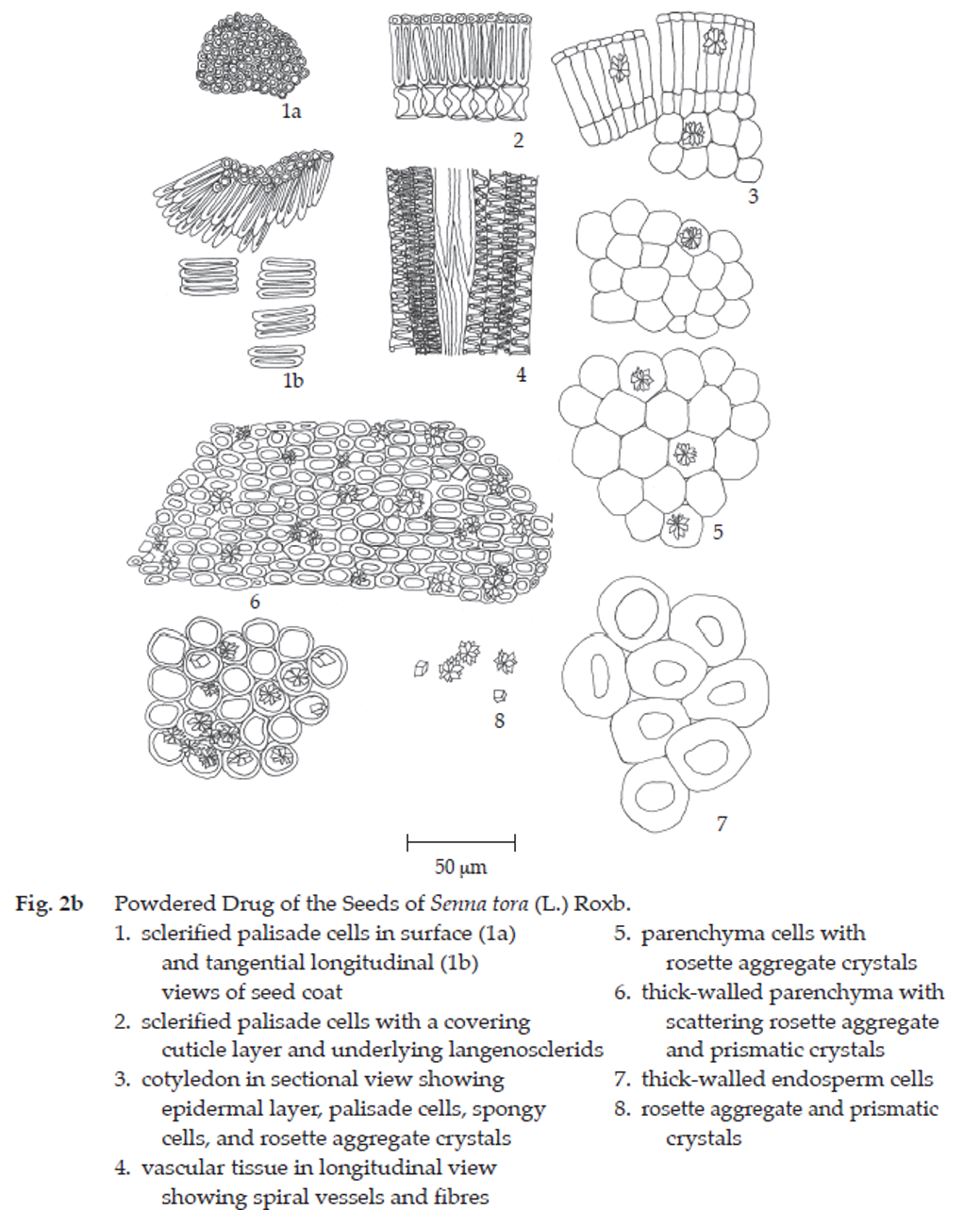ตำรามาตรฐานยาสมุนไพรไทย
Thai Herbal Pharmacopoeia
สำนักยาและวัตถุเสพติด กรมวิทยาศาสตร์การแพทย์ กระทรวงสาธารณสุข
Bureau of Drug and Narcotic, Department of Medical Sciences, Ministry of Public Health(Tinospora crispa (L.) Hook.f. & Thomson)
(Nelumbo nucifera Gaertn.)
(Centella asiatica (L.) Urb.)
(Centella Dry Extract)
(Centella Cream)
(Mesua ferrea L.)
(Piper sarmentosum Roxb.)
(Piper sarmentosum Roxb.)
(Pterocarpus santalinus L. f.)
(Santalum album L.)
(Senna tora (L.) Roxb.)
(Senna alata (L.) Roxb.)
(Senna Alata Tea)
(Piper retrofractum Vahl)
(Myristica fragrans Houtt)
(Andrographis paniculata (Burm. f.) Nees)
(Andrographis Capsules)
(Allium ascalonicum L.)
(Ocimum tenuiflorum L.)
(Curcuma longa L.)
(Turmeric Capsules)
(Turmeric Dry Extract)
(Turmeric Dry Extract Capsules)
(Arcangelisia flava (L.) Merr.)
(Curcuma sp.)
Harrisonia perforata (Blanco) Merr.
(Aristolochia pierrei Lecomte)
(Zingiber officinale Roscoe)
(Ginger Capsules)
(Ginger Tea)
(Cassia fistula L.)
(Nardostachys jatamansi (D. Don) DC.)
(Angelica sinensis (Oliv.) Diels)
Artemisia annua L.
(Ligusticum sinense Oliv. cv. Chuanxiong)
(Neopicrorhiza scrophulariiflora Pennell)
(Atractylodes lancea (Thunb.) DC.)
(Aucklandia lappa Decne)
(Terminalia chebula Retz.)
(Angelica dahurica (Hoffm.) Benth. & Hook. f. ex Franch. & Sav. var. dahurica)
(Kaempferia parviflora Wall. ex Baker)
(Hibiscus sabdariffa L.)
(Roselle Tea)
(Allium sativum L.)
(Zingiber zerumbet (L.) Sm.)
(Wurfbainia testacea (Ridl.) Škorničk.& A. D. Poulsen)
(Cannabis sativa L.)
(Myristica fragrans Houtt)
(Dracaena cochinchinensis (Lour.) S. C. Chen)
(Ficus racemosa L.)
(Hyptis suaveolens (L.) Poit.)
Clerodendrum indicum (L.) Kuntze
(Phyllanthus emblica L.)
(Citrus hystrix DC.)
(Citrus hystrix DC.)
(Areca catechu L.)
(Momordica charantia L.)
Moringa oleifera Lam.
(Aegle marmelos (L.) Corrêa)
(Solanum trilobatum L.)
(Morus alba L.)
Gynostemma pentaphyllum(Thunb.)
Makino
(Clinacanthus nutans (Burm. f.) Lindau)
(Cissus quadrangularis L.)
(Mimusops elengi L.)
(Zingiber montanum (J. König) Link. ex A. Dietr.)
(Piper betle L.)
(Capsicum annuum L.)
(Capsicum Oleoresin)
(Capsicum Gel)
(Piper nigrum L.)
(Piper nigrum L.)
(Eurycoma longifolia Jack)
(Thunbergia laurifolia Lindl.)
(Piper wallichii (Miq.) Hand.-Mazz.)
Senna garrettiana (Craib) H. S. Irwin & Barneby
(Terminalia bellirica (Gaertn.) Roxb.)
(Terminalia chebula Retz.)
(Caesalpinia bonduc (L.) H. Roxb.)
(Tarlmounia elliptica (DC.) H. Rob., S. C. Keeley, Skvaria & R. Chan)
(Hog Creeper Vine Dry Extract Capsiles)
(Hog Creeper Vine Dry Extract)
(Brachypterum scandens (Roxb.) Miq.)
(Lepidium sativum L.)
(Nigella sativa L.)
(Cuminum cyminum L.)
(Foeniculum vulgare Mill.)
(Plantago ovata Forssk.)
(Pimpinella anisum L.)
(Carum carvi L.)
(Anethum graveolens L.)
(Trachyspermum ammi (L.) Sprague)
Albizia procera (Roxb.) Benth.
(Acorus calamus L.)
(Tiliacora triandra (Colebr.) Diels)
Cyanthillium cinereum (L.) H. Rob.
(Orthosiphon aristatus (Blume) Miq.)
Murdannia loriformis (Hassk.) R. S. Rao & Kammathy
(Capparis micracantha DC.)
(Chrysopogon zizanioides (L.) Roberty)
(Cyperus rotundus L.)
(Cannabis sativa L.)
(Syzygium aromaticum (L.) Merr. & L. M. Perry)
(Boesenbergia rotunda (L.) Mansf.)
(Acanthus ebracteatus Vahl)
(Acanthus ilicifolius L.)
(Kaempferia galanga L.)
(Curcuma comosa Roxb.)
Betula alnoides Buch.-Ham. ex D. Don
Cannabis sativa L.
Carthamus tinctorius L
Mitragyna speciosa (Korth.) Havil
Mallotus repandus (Rottler) Müll. Arg
Azadirachta indica A. Juss. var. siamensis Valeton
Azadirachta indica A. Juss. var. siamensis Valeton
Punica granatum L.
Rhinacanthus nasutus (L.) Kurz
Baliospermum solanifolium (Burm.) Suresh
Curcuma aeruginosa Roxb
Boesenbergia kingii Mood & L. M. Prince
Senegalia rugata (Lam.) Britton & Rose
Acacia concinna (Willd.) DC.
Senegalia rugata (Lam.) Britton & Rose
Acacia concinna (Willd.) DC.
Senna alexandriana Mill. var. alexandriana
Cassia acutifolia Delile, Cassia angustifolia Vahl
Butea superba Roxb. ex Willd.
[Plaso superba (Roxb. ex Willd.) Kuntze, Rudolphia superba (Roxb. ex Willd.) Poir.
Pueraria candollei Graham
ex Benth. var. mirifica (Airy Shaw & Suvat.) Niyomdham
Streblus asper Lour.
Suregada multiflora (A. Juss.) Baill. (Gelonium
multiflorum A. Juss.
Cassia Seed is the dried mature seed of Senna tora (L.) Roxb. (Cassia tora L.) (Family Leguminosae), Herbarium Specimen Number: DMSC 1514, Crude Drug Number: DMSc 427.
Constituents Cassia Seed contains anthraquinone aglycones (e.g., emodin, aloe-emodin, chrysophanol, physcione, rhein) and their glycosides. It also contains toralactone, sterols, mucilage, etc.
Description of the plant (Figs. 1a, 1b) Herb or undershrub up to 1 m tall, nearly glabrous. Leaves with 2 to 4 pairs of leaflets; petiole 1 to 4 cm long; rhachis 2 to 3 cm long with a subulate, about 2 mm long, gland between the two lower pairs of leaflets; stipule setaceous, 1 to 1.5 cm long, more or less caducous, leaflets increasing in size distally with a short petiolule, membranous, obovate, apex broadly rounded, base cuneate-rounded, 2 to 5 cm long, 1.5 to 2 cm wide. Inflorescence axillary, raceme, short, 1- or few-flowered; bract linear-acute, 2 to 3 mm long; pedicel 4 to 10 mm (enlarging in fruit); sepals 5, subequal, ovate, about 5 mm long, 2 to 4 mm wide; petals 5, yellow, unequal, obovate, short-clawed with rounded apex, up to 1 cm long, about 6 mm wide; stamens 7 to 10, 3 large, 4 medium, 3 staminodial or absent, rarely perfect, filament 1.5 to 2 mm long, anther 1.5 to 2.5 mm long, opening by apical pores, reduced stamens absent; ovary densely pubescent, style glabrous with truncate apex (stigma). Fruit terete, more or less falcate, 10 to 15 cm long, about 5 mm wide. Seeds 20 to 30, glossy, brown rhomboidal, 3 to 6 mm long, 2 to 3 mm wide.
Description Odour, foetid; taste, slightly bitter.
Macroscopical (Figs. 1a, 1b) Hard rhomboid-prismatic, 3 to 6 mm long, 2 to 3 mm wide, with a beak at one end. Externally greenish brown or yellowish brown, smooth and glossy, with pale brown bands occurring on both sides. The hilum and micropyle are located on the beak side.
Microscopical (Figs. 2a, 2b) Transverse and longitudinal sections of the seed reveal seed coat, cotyledon and embryo. Seed coat, covered with a thick cuticle layer, following by a layer of sclerified palisade cells, a layer of lagenosclereids and several layers of thick-walled parenchyma. Endosperm, non-lignified, thick-walled cells, mostly with empty protoplasm. Cotyledons, two layers of dense, cylindrical, parenchymatous palisade cells and spheroidal spongy cells. Embryo, mostly with parenchyma cells. Crystals, rosette aggregate and prismatic, may be seen in thick-walled parenchyma, embryo and cotyledons.
Cassia Seed in powder possesses the diagnostic microscopical characters of the unground drug.




Warning
1. It should be used with caution in children, pregnant women or patients with inflammatory bowel disease.
2. It may cause drowsiness and/or mild abdominal discomfort such as colic or cramps. Excessive doses may produce nephritis.
3. Prolonged use should be avoided since it may result in diarrhea with excessive loss of water and electrolytes, particularly potassium.
Additional information Traditionally, it must be stir-fried1 before use.
Packaging and storage Cassia Seed shall be kept in well-closed containers, protected from light, and stored in a dry place.
Identification
A. To 100 mg of the sample, in coarse powder, add 25 mL of 2 M hydrochloric acid, heat on a water-bath for 15 minutes, and immediately filter through a plug of cotton wool. Allow the filtrate to cool and shake with 20 mL of ether. Separate the ether layer and shake with 10 mL of ammonia TS: the aqueous layer becomes pink-red.
B. Carry out the test as described in the “Thin-Layer Chromatography” (Appendix 3.1), using silica gel GF254 as the coating substance and a mixture of 75 volumes of n-hexane, 25 volumes of ethyl acetate and 1 volume of glacial acetic acid as the mobile phase. Apply separately to the plate, 10 µL each of the following two solutions. Prepare solution (A) by refluxing 10 g of the defatted sample2, in coarse powder, with 100 mL of chloroform for 1 hour. Filter the chloroform extract, evaporate the filtrate on a water-bath to dryness and dissolve the residue in 1 mL of methanol. For solution (B), dissolve 5 mg of emodin in 5 mL of methanol. After removal of the plate, allow it to dry in air and examine under ultraviolet light (254 nm), marking the quenching spots. The chromatogram obtained from solution (A) shows a quenching spot (hRf value 41 to 47) corresponding to the emodin spot from solution (B). Expose the plate to ammonia vapour; the spot due to emodin is reddish purple. Several other spots of different colours are also observed (Table 1); see also Fig. 3.
1Place the clean crude drug in a pan or wok, and s tir with gentle heat until slightly scented.
2Defat the sample by either extracting in a Soxhlet apparatus for 2 hours with petroleum ether (boiling range, 40° to 60°) or s tanding overnight with the petroleum ether without heating.
Table 1 hRf Values of Components in Chloroform Extract of the Seeds of Senna tora (L.) Roxb.
| Spot | hRf Value | Detection | |
| UV 254 | Ammonia Vapour | ||
| 1 2 3 4* 5 6 7 |
19-25 25-29 32-38 41-47 50-55 75-80 81-85 |
quenching quenching quenching quenching quenching quenching quenching |
violet yellowish brown reddish purple reddish purple reddish purple reddish purple reddish purple |
*emodin
Loss on drying Not more than 12.0 per cent w/w after drying at 105° to constant weight (Appendix 4.15).
Foreign matter Not more than 2.0 per cent w/w (Appendix 7.2).
Acid-insoluble ash Not more than 0.2 per cent w/w (Appendix 7.6).
Total ash Not more than 6.0 per cent w/w (Appendix 7.7).
Ethanol-soluble extractive Not less than 8.0 per cent w/w (Appendix 7.12).
Water-soluble extractive Not less than 20.0 per cent w/w (Appendix 7.12).
Dose Stir-fried seeds, 10 to 13 g a day
